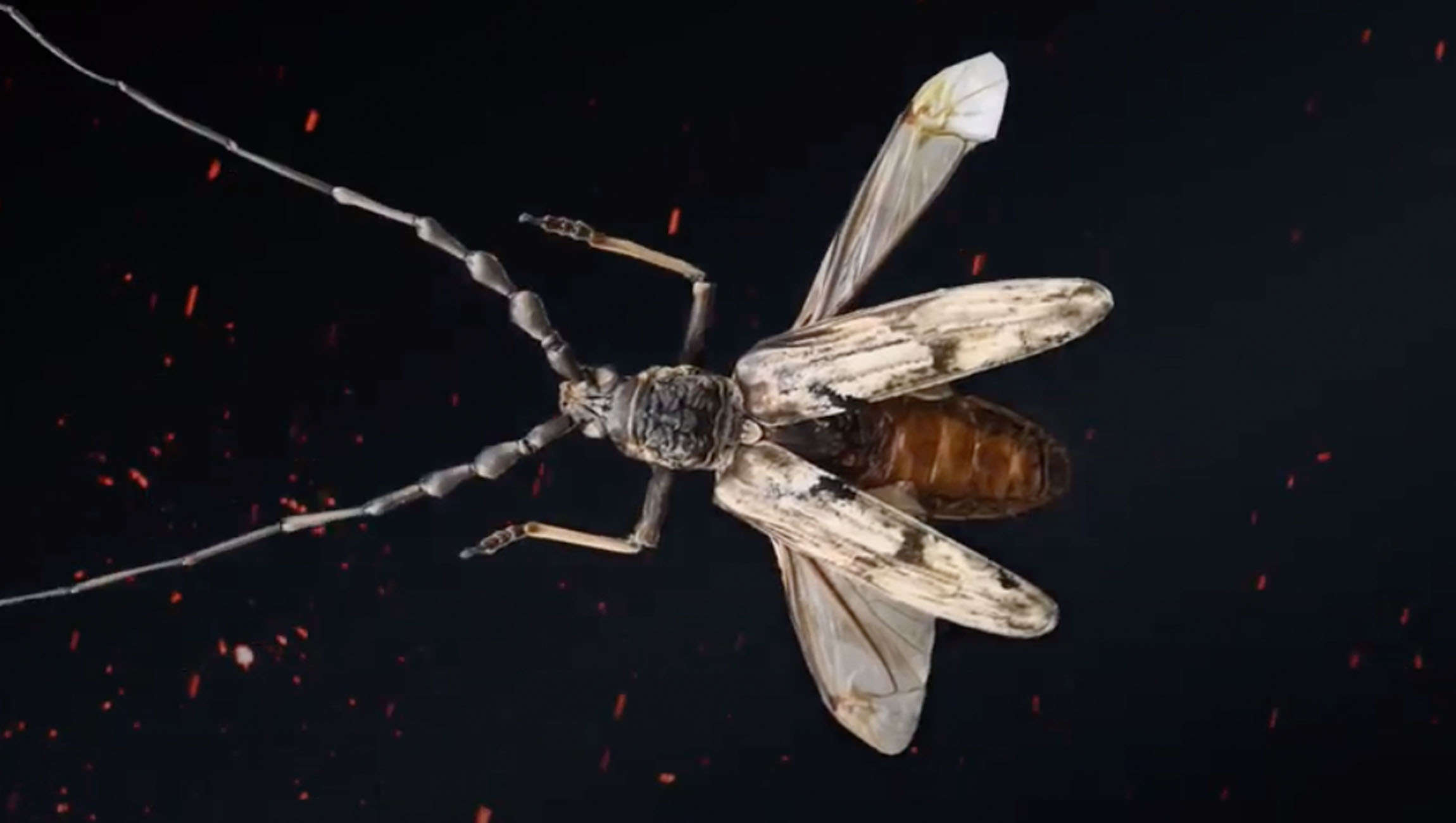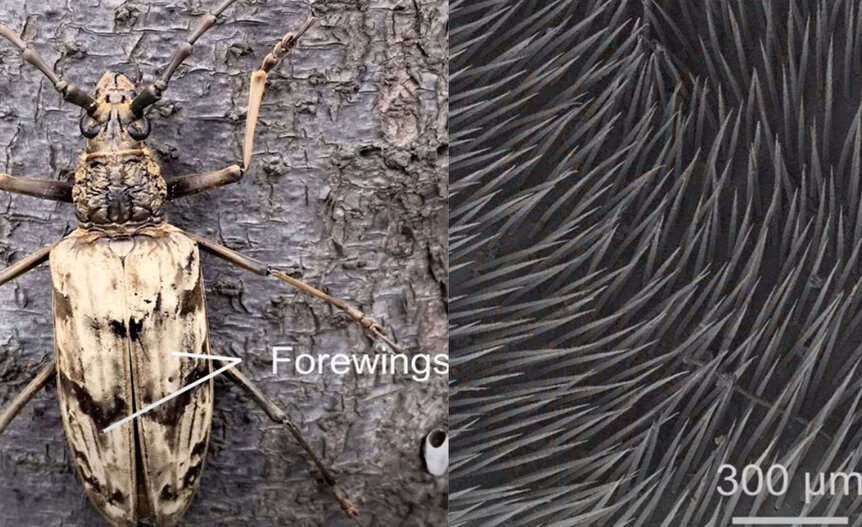Create a free profile to get unlimited access to exclusive videos, sweepstakes, and more!
Chill, because a beetle that can survive volcanic temperatures inspired a next-gen cooling material

Living by a volcano must be a literal hell, but to one bizarre species of beetle, at least it’s hell with air conditioning.
Infernal temperatures are no problem for a self-cooling species of longicorn beetle. Neocerambyx gigas can chill out near volcanoes in Thailand and Indonesia, where temperatures reach over 105 degrees Fahrenheit, and the ground can be a scorching 158 degrees. Their specially structured wings turn down the heat by about 9 degrees. Now an international team of scientists, who recently published a study in PNAS, have finally figured out how the beetle’s personal AC system works—and created a revolutionary material that cools just about anything.
“This material enables passive cooling without energy consumption,” Yuebing Zheng, of the University of Texas at Austin, told SYFY WIRE. “With further development to enhance the cooling efficiency and manufacturing, I expect it to be coated onto buildings, cars, electronic devices, planes, and firefighter clothes to make these stay cool, positively impacting energy, environment, climate and health.”
Not only does this film have unreal strength and flexibility, but it’s even water-resistant. It can be wrapped around everything from laptops to cars to entire buildings (and be used in wearable cooling fabrics). Bugs really do have some of the most amazing superpowers.
“The wing promotes cooling in two ways: one is to reflect sunlight and the other is to get rid of body heat by emitting electromagnetic waves at the longer wavelength,” Zheng explained.
N. gigas was previously known to cool itself, but exactly how remained a mystery until Zheng and his colleagues took a macro look at its wings. This strikingly gold insect survives the raging heat of volcanic environments by staying still (to prevent creating excess heat through movement) and letting its wings do the work. Having a golden glare helps. Up close, its forewings have shiny triangular fluffs that keep it from being roasted alive by reflecting light and radiating excess heat. Particles in the fluffs that are larger than the wavelengths of solar radiation beaming down on them also scatter light.
The structure of the fluffs on this beetle’s wings also keeps it from feeling the burn. They occur in triangular forms that have two smooth sides and one that is frilled, so they look kind of like pleats under a microscope. The edges of a fluff structure scatter sunlight while the entire structure reflects light that is radiated into the beetle’s surroundings.
“We mimicked the wing to create the architected polymer (known as PDMS) thin films with structures that can reflect sunlight efficiently and embedded ceramic particles that can emit long-wavelength waves,” said Zheng. “We used a microstamping method and then embedded the stamped polymer with ceramic particles.”
PDMS is also resistant to water and unaffected by many chemicals. It already has a great track record in passive cooling because of its own light-reflecting and scattering properties. Zheng and his team recreated the pleat-like triangular microstructures on the wings of N. gigas with this material, using particles similar to the fluffs that had a similar scattering effect. They also embedded microscopic spherical ceramic particles into the material, which were bigger than the particles of solar radiation that would inevitably hit it, so that way sunrays can be scattered instead of absorbed. These particles are made of a particular type of ceramic that is especially effective at reflecting and scattering light.
Since this stuff can resist solar radiation so well, what about the cosmic radiation astronauts would face on potential missions to deep space?
“Which wavelengths of electromagnetic waves or cosmic rays can be reflected depends on the microstructures or nanostructures and materials of the films,” Zheng said. “In principle, one could design such films for working under different conditions.”
Maybe these beetles should be the next animals to fly into space.















